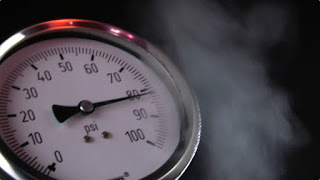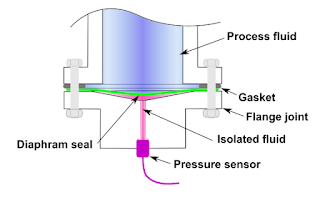DESCRIPTION
| AMETEK USG Model 1536 Stainless Steel Pressure Gauge for Semiconductor Industry |
AMETEK U.S. Gauge Model 1536 pressure gauges are designed and manufactured for gas distribution equipment used in semiconductor manufacturing. These 2 inch, all stain- less steel gauges are clean room produced, nitrogen purged, and double bagged.
These instruments are compatible with many toxic and corrosive gases. Welded face seal connections provide a threadless pressure seal and virtually eliminate a major source of contamination. Also available in NPT connections.
The Model 1536 is available in pressure ranges from 0 to 30 inches Hg VAC, to 0 to 4000 psi. This precision gauge incorporates rugged case construction with pressure relief.
FEATURES
These instruments are compatible with many toxic and corrosive gases. Welded face seal connections provide a threadless pressure seal and virtually eliminate a major source of contamination. Also available in NPT connections.
The Model 1536 is available in pressure ranges from 0 to 30 inches Hg VAC, to 0 to 4000 psi. This precision gauge incorporates rugged case construction with pressure relief.
FEATURES
- Cleaning for UHP gas applications exceeding ANSI B40.100 specifications
- Ra: 10 μinch (0.25 μm) finish on face seal connections
- Helium leak tested to con rm leakage rates of less than 10-9 scc/sec.
- All stainless steel (Type 316L) internal surfaces for corrosion resistance
- Large, easy-to-read dial graduations
- Handles wide variety of exotic gases
- Available with welded face seal fittings, or NPT connection
- Assembled and packaged in Class 10 clean room
- Low mount or center back connections
SPECIFICATIONS
| Close-up of VCR connection |
- Size: 2 inch diameter
- Case: Drawn stainless steel polished with pressure relief Ring and Window: One piece, threaded polycarbonate Pointer: Aluminum, black finish.
- Dial: Aluminum, white background with black markings Bourdon Tube: Type 316L stainless steel.
- Connection: Type 316L stainless steel, low mount or center back mount, male or female face seal fitting, or 1/4 inch male NPT – connectors are shipped with protective plastic caps.
- Surface Finish:
- Face seal connections: Ra: 10 μinch (0.25 μm) 1/4 inch NPT connections: 32 Ra.
- Ranges: 30 inches Hg vacuum to 4000 psi, single or dual scale, see ordering information.
- Overpressure: 130% of span maximum Working Temperature:
- Ambient: -40°F (-40°C) to 149°F (65°C) Fluid: Maximum 212°F (100°C) Accuracy:
- ±1% of span.
- Scales: psi, bar, kg/cm2, KPa, MPa (single or dual scale) inches Hg (for vacuum range, compound and vacuum gauges only).



